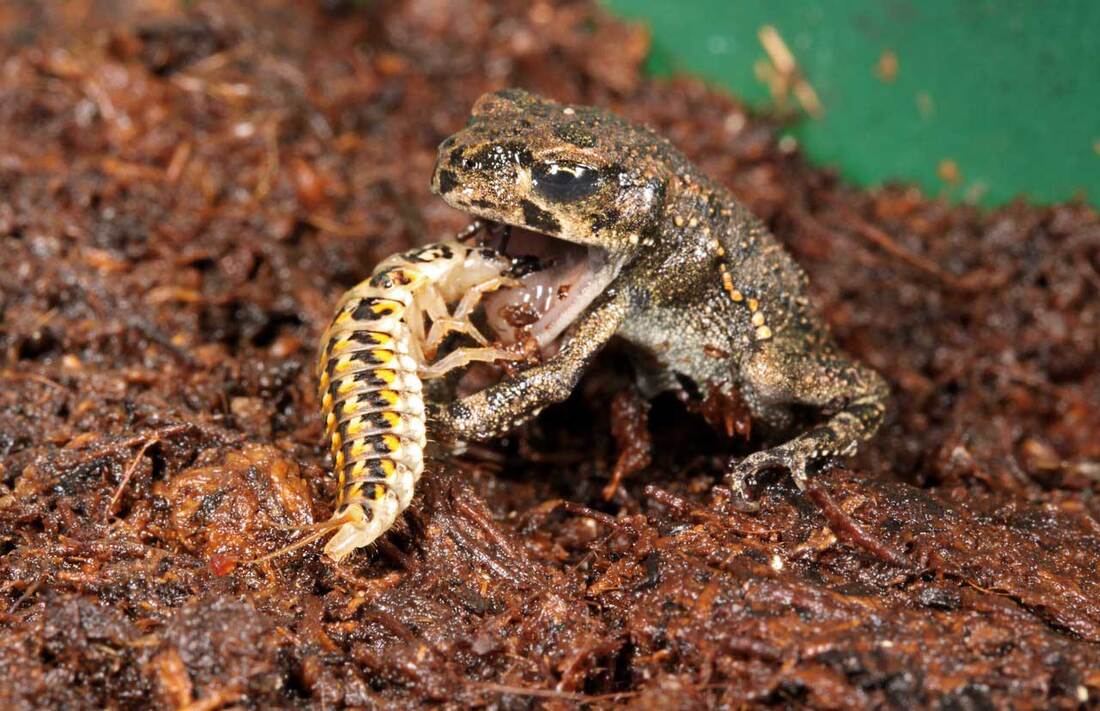|
Did you know the larvae of two species of ground beetles eat amphibians, instead of the other way around? This is an interesting example of predator-prey reversal.
The ground beetle larva moves its antennae back and forth to attract the much larger amphibians (frogs, toads, or salamanders). Thinking the beetle larva is prey, the frog attacks. Using its strong jaws, the larva latches onto the frog anywhere it can get a grip, often the frog's tongue. Then the larva uses a "sewing movement" of its jaws to work its way around the frog's body to a spot where it can chew through the skin and disable the frog. The larva's jaws are so strong that the frog is unable to pull it loose. Once the frog is disabled from the damage, the beetle larva then sucks the frog's blood for about a week. When the blood is drained, the larva starts chewing, eating the frog until only bones remain. Hmm... this may sound kind of awful, but keep in mind that frogs, toads, and salamanders eat hundreds of beetles during their lifetimes. So, just consider this payback. The photo shows a ground beetle larva attacking a European green toad.
0 Comments
Leave a Reply. |
Stan's Cogitations
Everyone needs a creative outlet. That's why I write. Archives
July 2024
|


 RSS Feed
RSS Feed